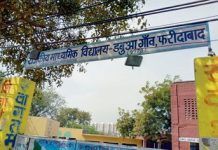More than a hundred individuals arrested in connection with last year’s riots in Northeast Delhi were identified by a facial recognition system (FRS), the Commissioner of Delhi Police has said. A total 231 of the 1,818 arrests so far had been made possible using the latest technological tools, Police Commissioner S N Shrivastava said.
“Of 231 such arrests, 137 persons were identified through our facial recognition system. The FRS was matched with police criminal records, and many accused were caught,” he said at the Commissioner’s annual press conference at Delhi Police headquarters. “Over 94 accused were identified and caught with help of their driving licence photos and other information,” Shrivastava said.
Fifty-three people were killed and at least 581 were injured in the riots, and 755 FIRs were registered, police said. Police on the ground made sure everyone’s complaints were registered, and a “free and fair investigation” took place, Shrivastava said.
The accused were arrested “mainly” on the basis of CCTV footage and open-source videos, police said. One of the rioters, who wore a yellow and blue jacket, was identified by his “clothes”; he was seen in footage from three-four CCTV cameras, attacking police and residents with weapons, police said. “Since he was seen in several bits of footage with weapons at Chand Bagh on February 24, we used FRS and he was identified. The accused was later arrested,” an officer said.
“Our teams retrieved deleted data from electronic devices of people present in the riots. We also used geo-location to ascertain the presence of the accused (at a particular place),” the Commissioner said. Police also deployed teams to reconstruct crime scenes using drone mapping and AI tools. The Special Cell and Cyber Unit used, apart from facial recognition, DNA fingerprinting, e-Vahan database, and ballistic analyses, police said.








